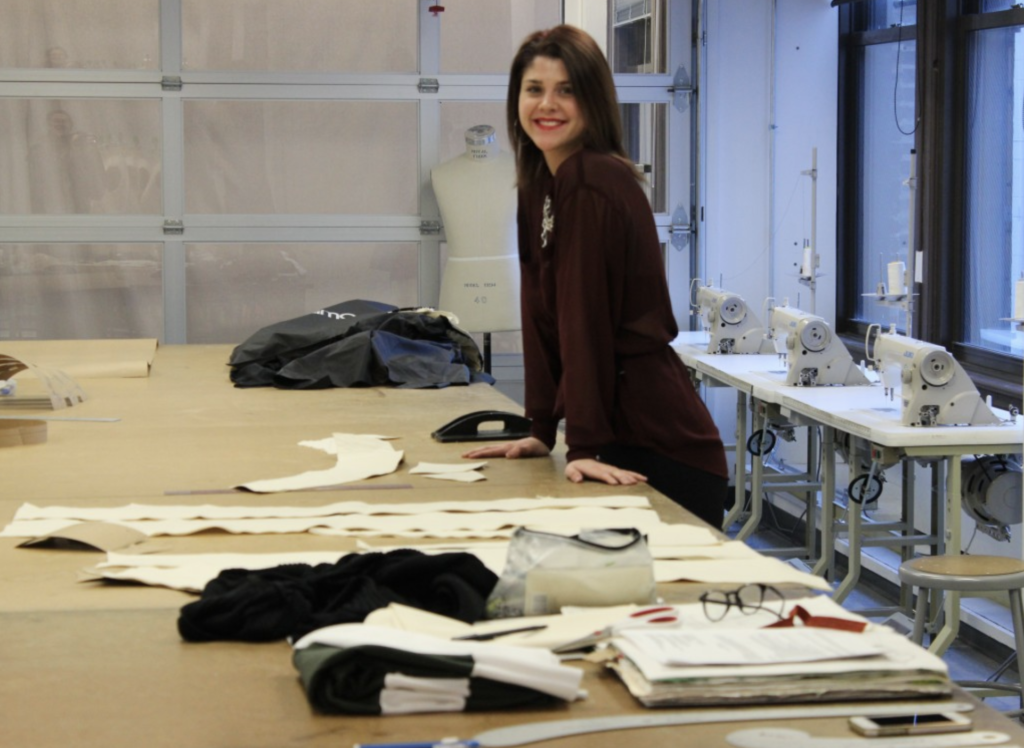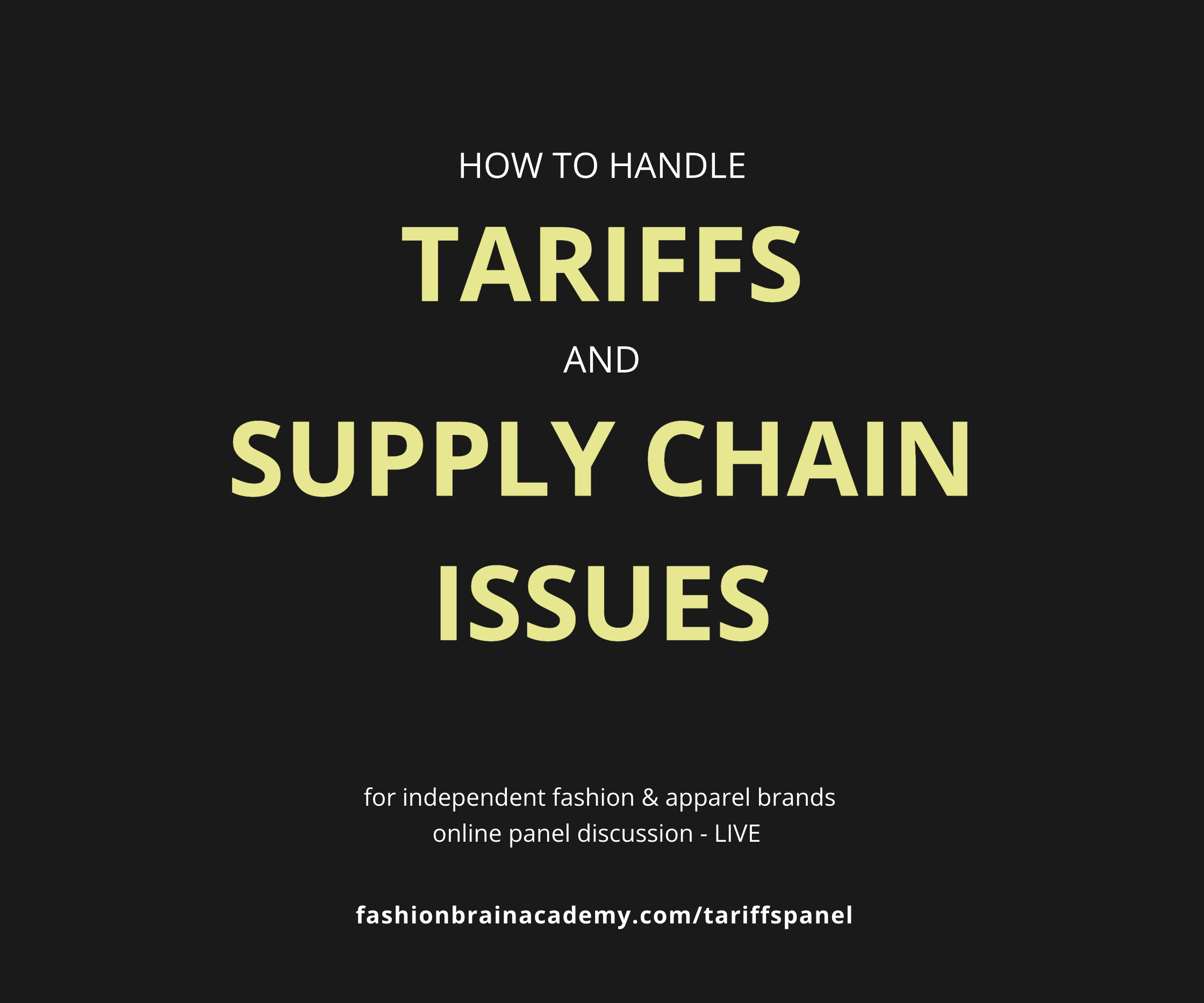
For over 14 years I had my own clothing line – a womenswear wholesale business as well as a boutique in Chicago. The BEST part of my job was sourcing fabrics for my clothing line. As one of my clients says it…
…she likes to spend her days “fondling fabric”. I know what she means.
There’s something awesome about seeing the delivery truck pull up with fresh rolls of sample fabric. It’s the best feeling! Full of possibility. It’s better than Christmas & my Birthday & a $100 Starbucks gift card.
I made a lot of mistakes with my fabric sourcing and I see even more made by the new designers I work with. The “fabric problem” is one of the main reasons I created my Start a Clothing Line Course.
Buying fabrics for your startup fashion company – at wholesale prices and in small quantities – can feel like an “insider business”. I was on the outside wondering WTH I was doing wrong and why sourcing was such a challenge.
People don’t always want to share resources or names of specific fabric & trim vendors and you can’t just Google up everything you need (however, this free fabric guide will get you started).
For today, I put together a list of the top 5 mistakes emerging fashion designers make with fabric sourcing.
1) Not Understanding the Need for Continuity
This depends on how you sell your collection and your overall business model. If you plan to sell wholesale (to boutiques), you need to source sample yardage first and then go back to the vendor to buy production yardage.
A big mistake is to use a certain material in your collection, show your line to retailers, take orders, and then NOT be able to order more when the time comes for production. Trust me, it’s a tricky little game when you have a small business and you’re ordering small yardage.
I can’t tell you how many times I meet new designers who are shocked that a specific print they sourced 4 months ago is not available for re-order at the exact moment it’s needed for production.
In all honesty, this issue cause me to use more common fabric (so I could always source it) and get more creative with retails and trims, rather than hoping I could source the EXACT fabric I first sampled months ago.
2) Buying Fabric Without a Plan to Use it
Ordering fabric you love because you know you’ll use it someday even if you don’t need it for anything now is a bad idea. It ties up your cash, takes up space in your studio, and adds the mental stress of “oh crap I need to use that stuff because I already paid for it.”
The fabric hoarding problem is real. When a designer falls in love with a fabric for “someday”, it rarely ends well.
3) Assuming Sample Yardage Will Be the Same Dye Lot as Production Yardage
I’ve made this mistake more times than I care to remember. It took me about 9 years of running my business to truly understand that coordinating fabrics was much better idea than trying to match them perfectly.
For instance, I remember a beautiful burgundy velveteen I was using for the bodice of a dress. I wanted the skirt to be the same shade but in chiffon. I found a great one, the fiber contents matched, and I ordered it up. Boom – the sample was perfect.
I sold a truckload of them wholesale and happily ordered more yardage for production. You know how this ends, right?
The production yardage of the velvet looked exactly the same as the sample. Yay.
The chiffon? A nightmare shade that clashed completely. Luckily, it was chiffon – an easy fabric to source wholesale. So I chose another color that coordinated, not matched – more like a dusty rose – and improvised. The dress was still cute and I shipped it a little late. I lost business for being late plus I lost money on the one I ordered that was the wrong color, but it wasn’t a total disaster – the dress was still cute.
Lesson learned.
4) Not Checking Fabric Rolls for Quality
This one is very easy to fix. But most of us do it like this…
We receive fabric for production, take a little swatch from one of the rolls, but don’t open all of them and check them thoroughly. Then by the time we cut into the rolls for production and find issues or flaws, it’s been 45 days and the vendor won’t do anything for us.
To avoid this issue, I paid extra to my cutting house for them to unroll and re-roll my yardage when it was received. Some contractors have machines that do this. My cutter would occasionally do it by hand if the quantities were small.
I’ll warn you that this feels like an extra step that’s unnecessary. It’s not. You only have a certain window of time to return damaged fabric and if you don’t check for issues quickly, you’ll be sorry.

The Single Biggest Mistake
And the worst possible – see it every day – pain in the booty – #1 most common fabric sourcing mistake…
5) Looking for the Holy Grail of Fabric
This one’s a doozy. I have personally wasted more time on this one than I care to remember. And I sure as heck spend a lot of time in my startup course trying to explain it to emerging designers.
Here’s how it usually goes…
The Holy Grail of Fabric means — you have the idea of the perfect fabric in your mind and you go out to source the EXACT thing. Then after 5 months of searching you start to wonder what kind of a messed up business is this that your perfect fabric cannot be found.
Anywhere.
At least not in quantities you can handle and a price you can afford.
Maybe it can be custom ordered overseas for a minimum of 3000 yards, but that’s not helping you very much.
And here’s what I hear all the time.
- “But I bought this piece at JoAnn Fabrics. Are you telling me that NO ONE can get this for me for less than 3000 yards?”
- “But I see this fabric all the time in clothing at places like H & M/Bloomingdale’s/Target. It’s nothing really that special. I’ll keep looking – I’m sure it’s out there.”
I feel your pain, believe me. I did this waaaaayyyy too many times and I think what was going on in my mind was a fear that I would be “lazy” if I settled or anything less than perfect. Oyyyy.
How to Source Whole Fabric the “Right” Way
First, I suggest you work things backwards. Let’s reverse engineer the process.
Rather than have the perfect fabric in mind and go searching for it, go to fabric vendors and see what’s available. This means finding vendors that offer minimum quantities that work for your business. Once you see what’s available in your price range at quantities you can handle, you can begin to design and get creative.
I strongly suggest you design your collection around what fabrics and trims you know you can actually get.
A great place to source wholesale fabrics in small quantities is the DG Expo Fabric and Trim Show. This is a small show that offers fabric and trim vendors with low minimum requirements, educational Seminars for design entrepreneurs (I’m an occasional speaker) and it’s small enough to avoid overwhelming new designers.
As always, thanks for reading!
Jane


